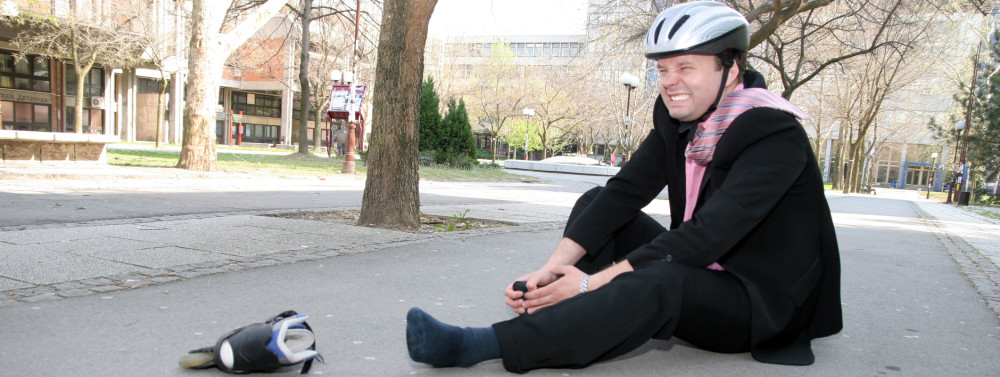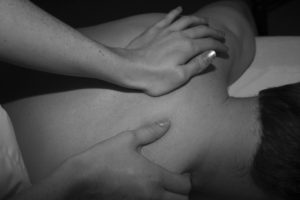The Triggers of RSD
One of the greatest challenges facing the modern healthcare system today is chronic pain. People who deal with chronic pain are often labeled as “weak” or “pain-seeking.” Therefore, many people, including healthcare professionals, don’t want to have anything to do with this patient population. On the other hand, these people are dealing with real symptoms that deserve the empathy and the attention of the entire community. One of the diseases that can lead to chronic pain is called Reflex Sympathetic Dystrophy (RSD), also known as Complex Regional Pain Syndrome (CRPS). In this disease, individuals are afflicted with a variety of symptoms, including:
- Chronic, severe pain which has been described as a burning, shooting, or electrical pain
- Hypersensitivity to touch in the affected limb
- Changes in the perception of pressure and temperature in the affected limb
- Problems related to changes in the texture and growth of their hair and nails
- Individuals have even reported changes in the texture and color of their skin
This severe disease can cause individuals to miss time from school and work. It can even make it difficult for people to perform daily activities around the house. According to a recent study published on the PubMed/NCBI database:
- About 26 out of every 100,000 people develop RSD on an annual basis
- On the McGill pain scale, the pain of RSD rates as a 45 out of 50
- This pain rates higher than an unexpected, traumatic amputation of a finger or toe!
Clearly, this is a serious disease that must be better understood. Recently, a study was conducted to determine some of the common triggers of RSD.
Bone Fractures: A Common RSD Trigger
A study was published in the Journal of Burns and Trauma to figure out what some of the most common triggers of RSD are. In the study, they analyzed the rate of RSD following a bone fracture. According to their statistics, they found:
- One of their studies found that 8 percent of individuals developed RSD symptoms following a wrist fracture
- 30 percent of people developed RSD following a fracture of their tibia
- Between 28 and 36 percent of people developed RSD following a Colles’ fracture
- 15 percent of people developed RSD after an ankle fracture
- A fracture of the fifth metatarsal led to the development of RSD in 3 percent of people
Clearly, bone fractures have a high rate of RSD development and the location of this fracture is important. While these studies were performed on relatively small populations, the numbers are impossible to ignore. What are some of the ways that people can fracture these bones?
Mechanisms of Injury and RSD Development
There are a few common ways that people sustain these types of injuries. Examples of common ways that people develop RSD include:
Work-Related Injuries: Some people develop RSD as a result of injuries sustained on the job. This could be as minor as a twisted ankle or a serious injury sustained in a construction accident.
Car Accidents: People also sustain injuries in an auto accident. A serious accident can lead to multiple bone fractures, such as the ones discussed above; however, even an accident with relatively minor contusions could lead to RSD.
Personal Injury: Individuals can also develop RSD following a personal injury at home. A slip and fall injury or a slide down the stairs could lead to nerve damage and inflammation, which ultimately leads to RSD. No injury is too big or small to lead to the development of this severe disease.
Treatment Options for RSD
When someone has been diagnosed with RSD, it is often at the end of a battery of tests and incorrect diagnoses spreading out over several years. They may feel like there is no hope of recovery; however, there are several options. Many people are able to manage their symptoms with anti-inflammatory medications, such as ibuprofen. Others who need help for RSD flares rely on intermittent opioid or narcotic medications. For those who hesitate at the thought of taking pills, there is also therapeutic electric nerve stimulation, abbreviated TENS. This has proven effective for many people with severe symptoms. Those who have particularly severe symptoms should also consider surgery. Transection of the affected nerves can prove to be a definitive treatment. Anyone with questions about the surgical options for RSD should meet with their doctor to learn more.
Help From A Personal injury lawyer
Clearly, Reflex Sympathetic Dystrophy (RSD) can be caused by a wide variety of accidents. For some individuals with this disease, they may never figure out what the cause of their syndrome truly is. Therefore, it is important to speak with an experienced RSD Lawyer in Sacramento. If you have been injured in an accident because of someone’s negligent actions and you have developed RSD, please contact me for free, friendly legal advice.
Related Articles by Ed Smith
Contact an Experienced Reflex Sympathetic Dystrophy Attorney in Sacramento
I’m Ed Smith, an RSD Lawyer in Sacramento. If you or a family member has developed this painful condition, please give me a call at 916-382-0693 for free, friendly legal advice.
See our sample results here.
Image Sourcing: The picture from the beginning of this article can be seen on Pixabay. The CC0 Creative Commons License allows the picture to be shown on this page.
:dr bw [cs 901]

